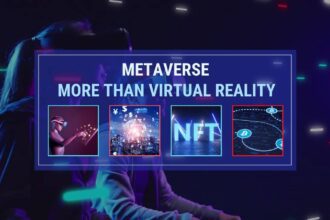In the evolving landscape of digital creativity, artificial intelligence (AI) has become a transformative tool. Adobe, a leader in digital media software, has once again pushed the boundaries of creative possibilities with the launch of its Adobe Firefly generative AI family, now expanding into video production.
Firefly has been an innovation hub for creatives since its introduction in early 2023, and the recent enhancements announced at Adobe MAX 2024 mark a significant leap forward. With Firefly’s new Video Model, as well as updates to its image, vector, and design models, Adobe is empowering creators to work faster, smarter, and more collaboratively. This article explores the latest Firefly features, their implications for the creative industry, and why Adobe’s focus on commercial safety makes Firefly a unique AI tool in the marketplace.
The Evolution of Adobe Firefly
When Adobe Firefly was first launched in March 2023, it introduced an AI-driven model designed to assist creatives in generating images, vectors, and designs from simple text prompts. In just a short period, Firefly has revolutionized workflows for designers and marketers alike, enabling them to produce high-quality content at unprecedented speeds. Since its release, Firefly has generated more than 13 billion images, illustrating its widespread adoption and utility.
Now, Adobe has expanded Firefly’s capabilities to include video creation, making it the first commercially safe video model available to the public. Adobe’s Firefly Video Model is designed with the same ethical guidelines that underpin the entire Firefly family. Trained on licensed Adobe Stock content and public domain data, Firefly aims to prevent bias and reduce harmful outputs, ensuring that AI-generated content is suitable for professional and commercial use.
A New Era for Video Creation
Video content continues to dominate the digital space, from social media platforms to corporate marketing. However, the process of creating high-quality video can be time-consuming and labor-intensive. This is where Adobe Firefly’s Video Model steps in. In the beta phase, the Firefly Video Model allows users to create short video clips from either text or image prompts—a game-changing capability for content creators who need to produce video on tight deadlines.
With this new tool, users can generate videos based on natural language descriptions, such as “a sunset over a calm ocean” or “a bustling city street at night.” The model supports cinematic control options, including camera angles, motion, zoom, and lighting, providing users with an unprecedented level of control over their AI-generated videos. These features not only streamline the video creation process but also allow creators to manipulate AI-generated clips to fit seamlessly within existing projects.
For example, Adobe’s new Generative Extend feature, available in the Premiere Pro beta, enables editors to extend video clips by generating additional frames. This tool is particularly useful when footage needs to be extended slightly to improve timing or smooth transitions. The Generative Extend feature intelligently extends the camera motion and subject’s movements while seamlessly lengthening background audio, allowing editors to avoid the dreaded “clip not long enough” issue.
While Firefly’s video capabilities are still in beta, the results are impressive, even in this early stage. According to TechCrunch, the Generative Extend feature has proven to be more practical and polished compared to some competitors in the AI video space, such as Runway’s Gen-3 Alpha or OpenAI’s Sora. Adobe’s decision to focus on improving video editing tools, rather than generating video from scratch, shows the company’s understanding of its user base—creatives who prefer to enhance existing assets rather than rely solely on fully generated content.
New Tools for Designers: Faster Image Generation and Vector Advancements
In addition to the video model, Adobe has introduced several enhancements to its image, vector, and design models. The Firefly Image Model 3, for example, boasts 4x faster image generation than previous versions. This improvement is crucial for professionals working in fast-paced environments where deadlines are tight and revisions are frequent. Firefly’s image generation allows users to experiment with different concepts quickly, helping teams to ideate and refine visuals at unprecedented speeds.
Firefly’s advancements in vector art are equally impressive. The Firefly Vector Model, which was introduced earlier in 2024, has now been upgraded to allow greater control over Generative Shape Fill, Generative Recolor, and Text to Pattern features within Adobe Illustrator. These tools enable designers to create intricate, highly detailed vector artwork with just a few clicks, reducing the need for manual adjustments and iterations. Whether a designer is working on logos, posters, or digital illustrations, Firefly’s vector model helps streamline the process while maintaining creative control.


Text-to-Video and Image-to-Video: A New Dimension for Creatives
Among the most exciting features of the Firefly Video Model are its Text-to-Video and Image-to-Video capabilities. With Text-to-Video, users can transform written descriptions into dynamic video clips, complete with customizable settings for camera motion, zoom, and angle. The Image-to-Video function allows still images to be brought to life, creating animations or moving backgrounds that can enhance any project.
These features are especially useful for creating B-roll footage—those supplementary shots used to fill gaps or add visual interest in video production. Firefly’s ability to generate B-roll from reference images simplifies the process of finding or shooting additional footage, saving both time and money. For marketers and advertisers, this feature opens new possibilities for creating engaging video content without needing to rely on costly and time-consuming video shoots.
Firefly’s Impact on Enterprise-Level Workflows
The rise of generative AI has brought new opportunities for enterprise-level content creation, and Adobe is taking full advantage of this trend with its Firefly Services. This collection of creative and generative APIs is designed to help large businesses scale their content production. One standout feature is Bulk Create, currently in beta, which allows users to edit large volumes of images more efficiently. Tasks like resizing or background removal, which would typically take hours or even days, can now be automated, freeing up time for creative teams to focus on more strategic work.
Additionally, Adobe is testing new AI-powered tools for dubbing and lip-syncing in video content. These features use Firefly’s video model to translate spoken dialogue into different languages while maintaining the original voice and matching lip movements. This has enormous potential for brands looking to scale their content globally, allowing them to create localized video content without the need for time-consuming manual editing or expensive reshoots.
Commercial Safety and Ethical AI Use
One of the critical elements that sets Adobe Firefly apart from other generative AI models is its commitment to commercial safety and ethical AI development. Adobe has taken a responsible approach to training Firefly, using only licensed content, such as Adobe Stock, and public domain materials. This ensures that the content generated by Firefly is free from legal or ethical concerns, such as the use of copyrighted materials or the propagation of harmful content.
In line with this commitment, Adobe has also incorporated Content Credentials into Firefly-generated outputs. These credentials act as a digital “nutrition label”, showing how the content was created and what AI tools were used. Adobe’s Content Authenticity Initiative, which launched in 2019, now boasts over 3,700 members and aims to increase transparency and accountability in the digital content creation process. By applying content credentials to Firefly-powered creations, Adobe ensures that its users can easily verify the authenticity of their work.
Firefly in the Hands of Creatives: Expanding Opportunities
While Adobe has positioned Firefly as a tool for professional creatives, it has also focused on expanding access to digital skills for the next generation. As part of its global initiative, Adobe aims to equip 30 million learners and teachers with essential digital skills by 2030. This initiative includes training in AI literacy, content creation, and digital marketing, providing creatives at all levels with the tools they need to thrive in a rapidly changing digital landscape.
For professional creatives, Adobe Firefly represents not just a set of tools, but a new way of working. By automating repetitive tasks and enabling faster content generation, Firefly allows designers, marketers, and video editors to focus on what they do best: creating compelling, impactful content. As Adobe continues to refine and expand Firefly’s capabilities, its impact on the creative industry will only grow, making AI-powered content creation the new standard.
Conclusion
Adobe Firefly is not just an AI tool—it’s a revolution in how creative work is done. With its latest expansions, including the Video Model, Firefly is empowering creatives to produce high-quality content more efficiently and at scale, without compromising on originality or creativity. From generative video to enhanced image and vector models, Firefly is poised to transform workflows across the creative spectrum. Adobe’s commitment to commercial safety and ethical AI use ensures that Firefly remains a trusted tool for professionals. As the world of digital content creation continues to evolve, Adobe Firefly is leading the charge, providing the tools necessary to meet the growing demand for fast, high-quality, and personalized content.
















